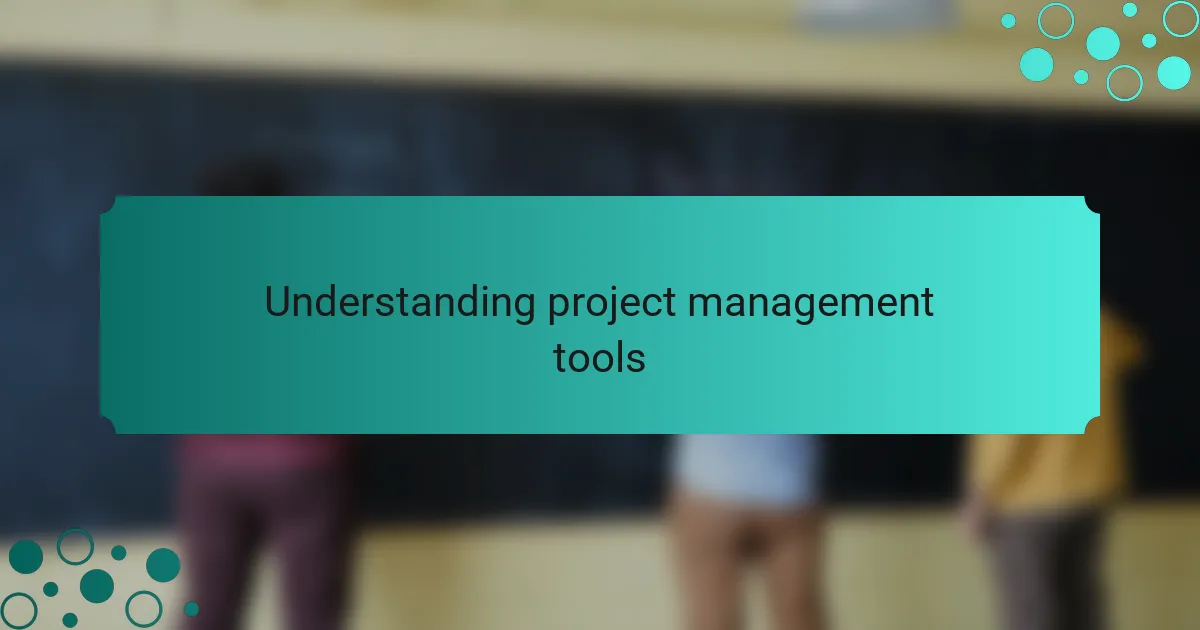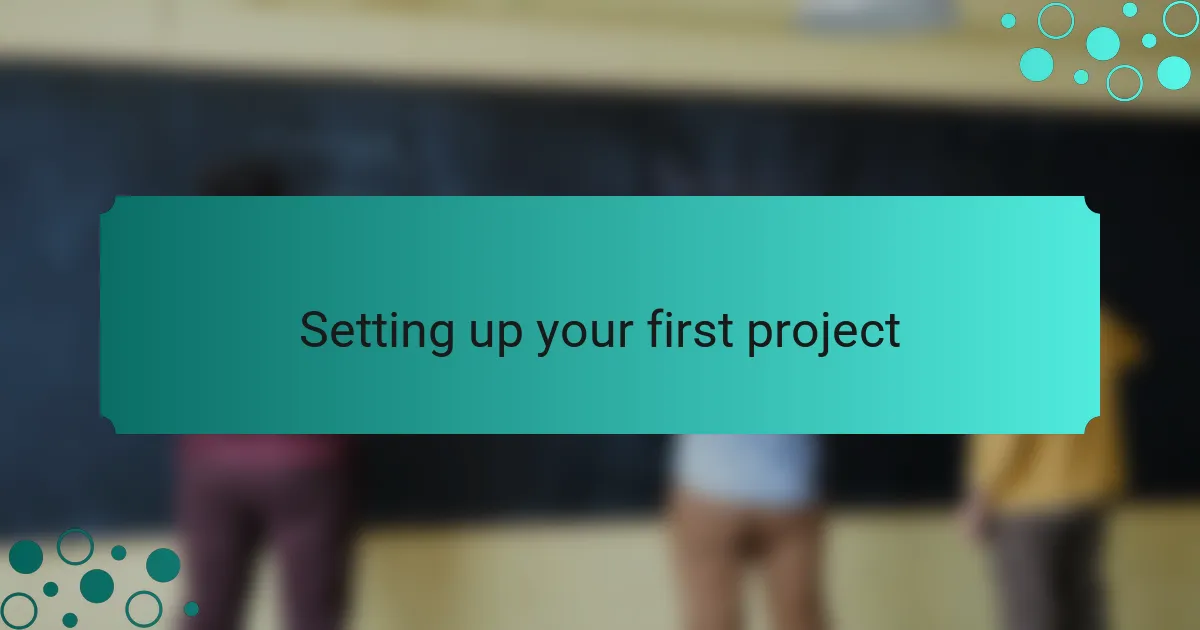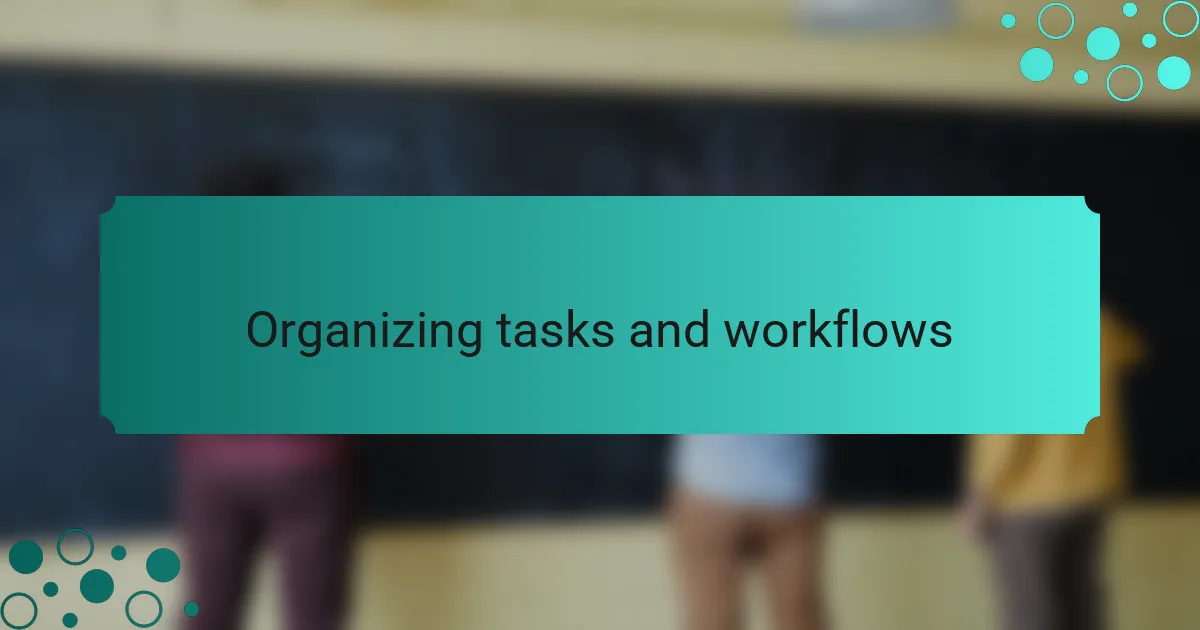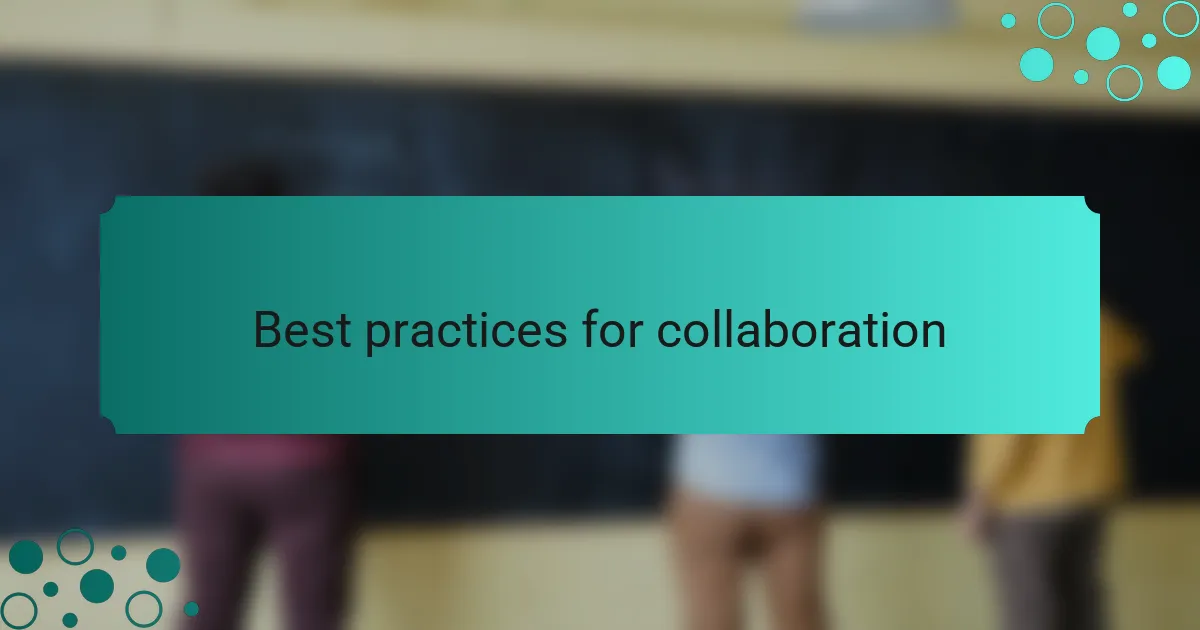Key takeaways
- Project management tools like Asana enhance collaboration, streamline communication, and reduce stress through organized task management.
- Key features of Asana include task management, timeline view, integrations with other tools, and customizable reporting, facilitating efficient project tracking.
- Effective project setup involves defining goals, breaking tasks into manageable pieces, setting deadlines, and inviting team members to encourage collaboration.
- Best practices for collaboration include using comments for communication, scheduling regular check-ins, and celebrating small achievements to boost morale.

Understanding project management tools
Project management tools are essential for keeping teams organized and focused. My experience with Asana has shown me how such tools facilitate collaboration, streamline communication, and track progress in real-time. Having a structured environment lets me feel more in control of my tasks, which reduces stress and fosters creativity.
When I first started using project management tools, I was overwhelmed by the options. However, understanding the key features of each tool helped me choose the right one for my needs. Here’s a comparison of a few popular project management tools, including Asana, which I’ve found particularly user-friendly.
| Tool | Key Features |
|---|---|
| Asana | Task tracking, timeline visualization, integrations |
| Trello | Kanban-style boards, card-based tasks, simplicity |
| Monday.com | Custom workflows, visual project timelines, analysis tools |
| Jira | Agile project management, bug tracking, reporting features |

Introduction to Asana features
Asana is a versatile project management tool that I’ve found invaluable for organizing tasks and collaborating with teams effectively. Its user-friendly interface allows for easy navigation, which I appreciate, especially when I’m under tight deadlines. The ability to share projects and assign tasks keeps everyone on the same page, fostering transparency and accountability.
One feature that stands out to me is the timeline view. I often rely on this to visualize project milestones and deadlines, ensuring that I can allocate resources effectively. Additionally, Asana’s integrations with other tools, such as Slack and Google Drive, make it an all-in-one solution for managing work seamlessly.
Here’s a quick comparison of some key Asana features:
| Feature | Description |
|---|---|
| Task Management | Create, assign, and prioritize tasks for team collaboration. |
| Timeline View | Visualize project schedules and deadlines at a glance. |
| Integrations | Connect with tools like Slack, Google Drive for enhanced workflow. |
| Reporting | Monitor project progress with customizable reports and dashboards. |

Setting up your first project
Setting up your first project in Asana can be exciting yet overwhelming. I remember when I first started; the possibilities felt endless, but I aimed to keep things simple. I quickly learned that establishing clear goals and tasks right from the beginning laid the groundwork for productivity.
When I set up my first project, I focused on these essential steps:
- Define your project goals: What do you want to achieve?
- Create a project in Asana: Choose a template that fits your needs or start from scratch.
- Add tasks: Break down the project into manageable pieces.
- Set due dates: Assign deadlines to hold yourself accountable.
- Organize tasks into sections: This helps in visualizing progress.
- Invite team members: Collaboration is key; make sure everyone is on board.
Each step helped me tailor the project to my needs, and seeing everything come together felt incredibly rewarding.

Organizing tasks and workflows
When it comes to organizing tasks and workflows in Asana, I’ve found it incredibly effective to break down larger projects into smaller, manageable tasks. This approach not only prevents overwhelm but also provides a clear roadmap for progress. I remember the first time I implemented this; seeing tasks shift from ‘To Do’ to ‘Done’ was genuinely satisfying and kept my motivation high.
Using Asana’s features, like assigning tasks to team members and setting deadlines, really enhances collaboration. One time, I was part of a team that used these features extensively, and it transformed our workflow. We communicated more clearly and stayed on track, which ultimately led to a successful project outcome.
Here’s a quick comparison table that highlights how organizing tasks in Asana can streamline workflows compared to traditional methods.
| Aspect | Asana | Traditional Methods |
|---|---|---|
| Task Assignment | Easy assignment to team members | Manual delegation, often unclear |
| Progress Tracking | Visual boards and status updates | Physical lists, harder to track |
| Collaboration | Real-time comments and integrations | Emails or meetings, time-consuming |
| Flexibility | Adjustable as project evolves | Rigid plans, difficult to change |

Best practices for collaboration
When collaborating in Asana, communication is key. I’ve noticed that using comments directly on tasks keeps conversations organized and contextually relevant. For instance, when I run into an issue, I tag team members in comments rather than sending emails. This not only speeds up responses but also ensures that everyone stays informed without overwhelming inboxes.
Another effective practice is to set regular check-ins. I often create recurring tasks for team meetings or updates. These moments not only help discuss project status but also allow for team bonding. There was a time when my team struggled with missed deadlines due to miscommunication. By instituting weekly check-ins, we established a rhythm that greatly improved our workflow and enhanced our collaboration.
I’ve also found value in celebrating small wins along the way. Recognizing accomplishments—whether big or small—builds morale and keeps everyone engaged. Last year, we completed a challenging project ahead of schedule, and we took a moment to share the success in Asana. It felt rewarding and reminded us all why teamwork matters. How do you celebrate your team’s victories? Perhaps you could create a space in Asana for this, too!

Personal tips for efficiency
When it comes to enhancing efficiency in Asana, I’ve discovered the power of setting clear deadlines. Early in my journey, I struggled with project timelines. By assigning specific due dates, I quickly felt a sense of urgency that drove my team and me to stay committed. Seeing tasks completed on time not only boosted my confidence but also fostered a collaborative environment.
Another effective tip is to take advantage of Asana’s templates. I remember the first time I used a project template; it saved me hours of setup time. Now, whenever I start a new project, I simply tweak an existing template, which allows me to dive straight into the work rather than getting bogged down by administrative tasks.
- Break down larger tasks into smaller, manageable subtasks to avoid overwhelm.
- Use tags and custom fields to categorize tasks according to priority or complexity.
- Regularly review and adjust project timelines to stay on track and respond to any unforeseen challenges.
- Foster team communication through comments on tasks to centralize discussions and updates.
- Utilize the mobile app to keep track of tasks and updates on the go, ensuring you stay engaged even outside the office.
